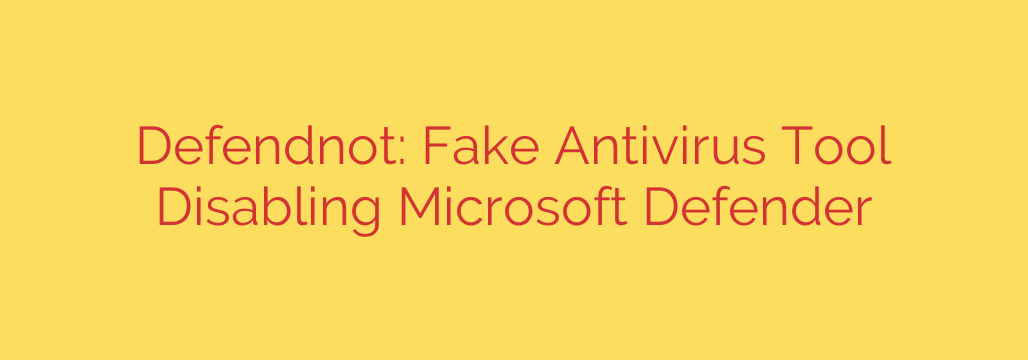
Beware of Defendnot: The Fake Security Tool Disabling Your Protection
In the ever-evolving landscape of cyber threats, malicious actors constantly devise new ways to trick users. One particularly insidious method is the use of fake security software – programs that masquerade as legitimate tools but are designed to cause harm. A recent threat of this nature has emerged, identified by security researchers, which deceptively presents itself as an antivirus solution but works to undermine your existing defenses.
This deceptive program, sometimes referred to as Defendnot, operates under a false pretense of providing protection. However, its true purpose is the exact opposite. Instead of scanning for and removing malware, its primary function is to disable the built-in security measures provided by Microsoft Windows, specifically Microsoft Defender.
Why would a malicious program want to disable your legitimate antivirus? The answer is simple: to leave your system vulnerable. By deactivating Microsoft Defender, Defendnot effectively removes a crucial layer of defense, opening the door for other, more dangerous malware to infect your computer undetected. Once Defender is disabled, ransomware, spyware, data-stealing Trojans, and other threats can potentially compromise your system without triggering alerts.
Falling victim to such a threat can happen in various ways, including clicking on malicious links, downloading files from untrusted sources, or interacting with deceptive pop-ups claiming your computer is infected. Users might install Defendnot believing they are installing a helpful security tool, unaware that they are actually installing malware designed to compromise their safety.
Protecting yourself requires vigilance and adherence to best practices:
- Be Skeptical of Unsolicited Downloads: Never download software from pop-ups or websites you don’t explicitly trust, especially if they claim your computer is infected and offer an immediate “fix.”
- Download from Official Sources Only: Obtain all software, including security programs, exclusively from the developer’s official website or reputable app stores.
- Verify Security Software: Legitimate antivirus software doesn’t typically appear out of nowhere and demand installation. Your operating system usually comes with built-in protection or you install a known, trusted brand yourself.
- Keep Microsoft Defender Enabled: Ensure Microsoft Defender (or your preferred, legitimate third-party antivirus) is always active, updated, and performing regular scans. Do not disable it unless you are installing another verified security solution.
- Exercise Caution with Emails and Links: Avoid clicking on suspicious links or opening attachments from unknown senders.
If you suspect you may have inadvertently installed a fake security tool like Defendnot, immediately disconnect your computer from the internet to prevent further infection or communication with malicious servers. Then, use a reputable, independently verified anti-malware scanner (potentially run from a safe mode environment or a clean USB drive if necessary) to scan and clean your system.
The threat posed by fake security tools highlights the importance of staying informed and cautious online. Recognizing the deceptive nature of programs like Defendnot is the first step in ensuring your digital security remains robust against malicious attacks. Always prioritize legitimate software and maintain strong digital hygiene.
Source: https://www.kaspersky.com/blog/defendnot-disables-microsoft-defender-on-windows/53820/








